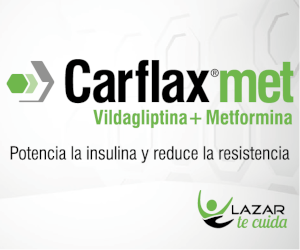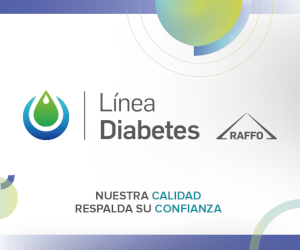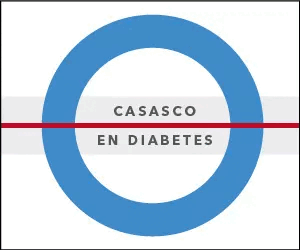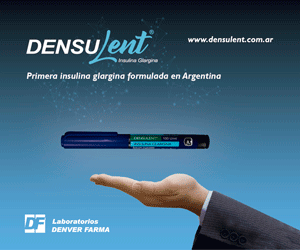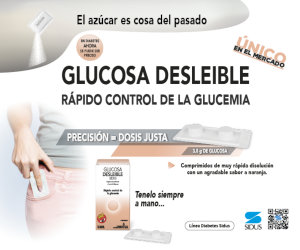Take position. Effect of SGLT2-i on blood pressure, vascular damage, kidney disease, and associated cardiovascular risk
DOI:
https://doi.org/10.47196/diab.v57i3.728Keywords:
gliflozins, renal protection, cardiac protection, vascular protection, effects on cells and organellesAbstract
A surprising new paradigm has been established with the advent of "gliflozins". Beyond their antihyperglycemic action, these drugs have significantly impacted the therapeutics of cardio-vascular-renal-metabolic disorders responsible for the most prevalent diseases we address in clinical practice. Sodium-glucose cotransporter type 2 (SGLT-2 i) inhibitors help control and reduce the progression of target organ damage.
In this Statement of Position, four of the Medical Societies linked to these issues agreed to reflect the knowledge of this hopeful phenomenon generated by more than 7,500 publications published in the last ten years on the benefit of "gliflozins". We decided to rigorously review the experimental evidence and the multiple controlled works showing its metabolic, vascular, cardiac, renal, and cellular effects, including unresolved aspects and warnings about the precautions in its use.
References
I. Cherney DZ, Perkins BA, Soleymanlou N, Maione M, Lai V, Lee A, Fagan NM, Woerle HJ, Johansen OE, Broedl UC, von Eynatten M. Renal hemodynamic effect of sodium-glucose cotransporter 2 inhibition in patients with type 1 diabetes mellitus. Circulation. 2014 Feb 4;129(5):587-97. doi: 10.1161/CIRCULATIONAHA.113.005081.
II. Shin SJ, Chung S, Kim SJ, Lee EM, Yoo YH, Kim JW, Ahn YB, Kim ES, Moon SD, Kim MJ, Ko SH. Effect of sodium-glucose co-transporter 2 inhibitor, dapagliflozin, on renal renin-angiotensin system in an animal model of type 2 diabetes. PLoS One 2016 Nov 1;11(11):e0165703. doi: 10.1371/journal.pone.0165703.
III. Packer M. Critical reanalysis of the mechanisms underlying the cardiorenal benefits of SGLT-2 inhibitors and reaffirmation of the nutrient deprivation signaling/autophagy hypothesis. Circulation 2022 Nov;146(18):1383-1405. doi: 10.1161/CIRCULATIONAHA.122.061732.
IV. Theofilis P, Oikonomou E, Tsioufis K, Tousoulis D. Diabetes mellitus and heart failure: epidemiology, pathophysiologic mechanisms, and the role of SGLT-2 inhibitors. Life (Basel) 2023 Feb 10;13(2):497. doi: 10.3390/life13020497.
V. Kondo H, Akoumianakis I, Badi I, Akawi N, Kotanidis CP, Polkinghorne M, Stadiotti I, Sommariva E, Antonopoulos AS, Carena MC, et al. Effects of canagliflozin on human myocardial redox signalling: clinical implications. Eur Heart J 2021;42:4947-4960.
VI. Avogaro A, Fadini GP, Del Prato S. Reinterpreting cardiorenal protection of renal sodium-glucose cotransporter 2 inhibitors via cellular life history programming. Diabetes Care 2020 Mar;43(3):501-507. doi: 10.2337/dc19-1410.
VII. Tuttle KR. Digging deep into cells to find mechanisms of kidney protection by SGLT2 inhibitors. J Clin Invest 2023 Mar 1;133(5):e167700. doi: 10.1172/JCI167700.
VIII. Briasoulis A, Al Dhaybi O, Bakris GL. SGLT2 Inhibitors and mechanisms of hypertension. Curr Cardiol Rep 2018 Jan 19;20(1):1. doi: 10.1007/s11886-018-0943-5.
IX. Kim HK, Ishizawa R, Fukazawa A, Wang Z, Bezan-Petric U, Hu MC, Smith SA, Mizuno M, Vongpatanasin W. Dapagliflozin attenuates sympathetic and pressor responses to stress in young prehypertensive spontaneously hypertensive rats. Hypertension 2022 Aug;79(8):1824-1834.
X. Adam CA, Anghel R, Marcu DTM, Mitu O, Roca M, Mitu F. Impact of sodium-glucose cotransporter 2 (SGLT2) inhibitors on arterial stiffness and vascular aging. What do ee know so far? (a narrative review). Life (Basel) 2022 May 27;12(6):803. doi: 10.3390/life12060803.
XI. Trum M, Riechel J, Lebek S, Pabel S, Sossalla ST, Hirt S, Arzt M, Maier LS, Wagner S. Empagliflozin inhibits Na+/H+ exchanger activity in human atrial cardiomyocytes. ESC Heart Fail 2020 Dec;7(6):4429-4437. doi: 10.1002/ehf2.13024.
Downloads
Published
How to Cite
Issue
Section
License
Copyright (c) 2023 on behalf of the authors. Reproduction rights: Argentine Diabetes Society

This work is licensed under a Creative Commons Attribution-NonCommercial-NoDerivatives 4.0 International License.
Dirección Nacional de Derecho de Autor, Exp. N° 5.333.129. Instituto Nacional de la Propiedad Industrial, Marca «Revista de la Sociedad Argentina de Diabetes - Asociación Civil» N° de concesión 2.605.405 y N° de disposición 1.404/13.
La Revista de la SAD está licenciada bajo Licencia Creative Commons Atribución – No Comercial – Sin Obra Derivada 4.0 Internacional.
Por otra parte, la Revista SAD permite que los autores mantengan los derechos de autor sin restricciones.













